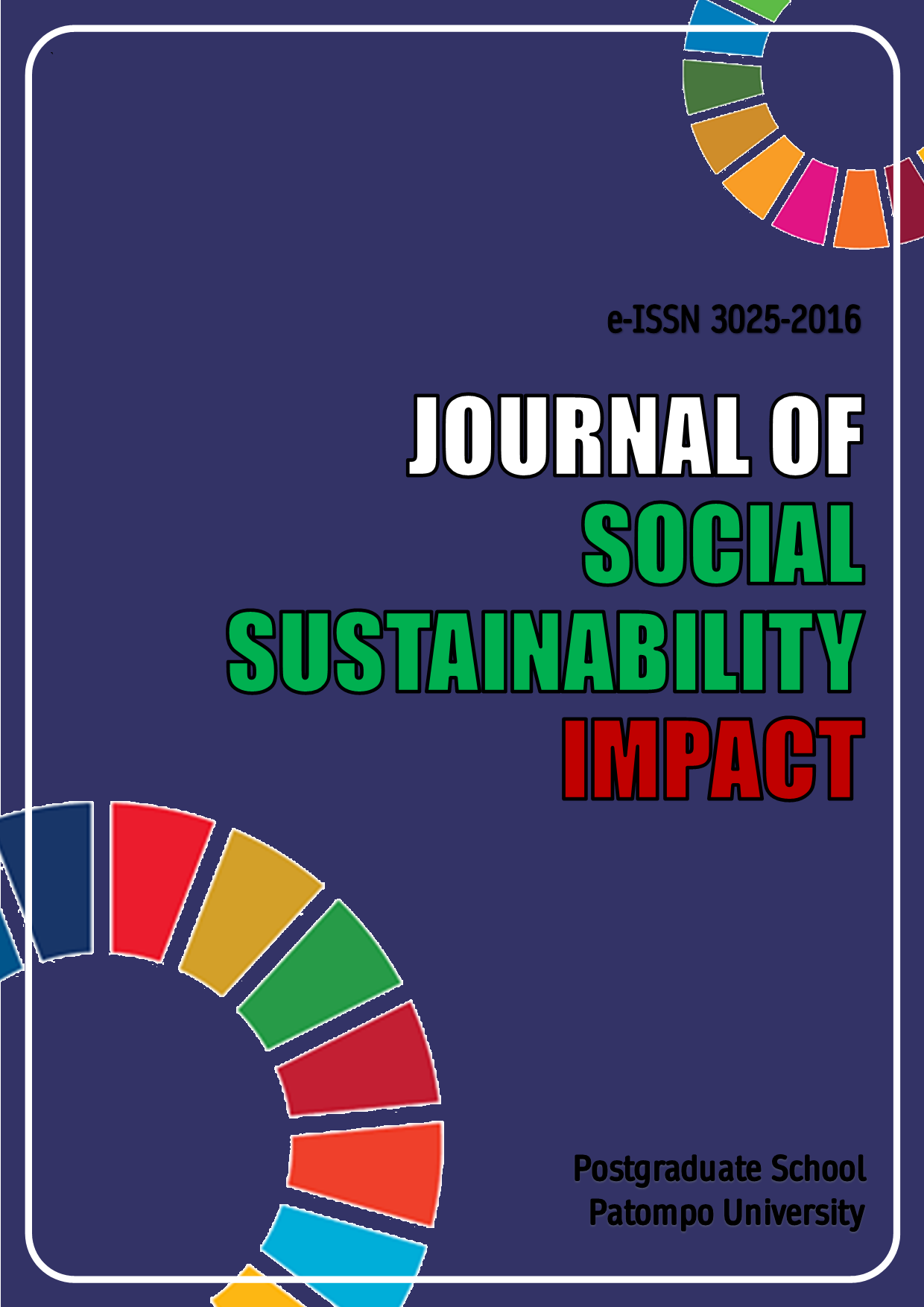Analysis of the Impact of Internet and Library Use on Junior High School Students Learning Achievement
Keywords:
academic performance, academic achievement, Internet usage, library utilizationAbstract
This study investigates the influence of internet usage and library utilization on the academic achievement of Junior High School students in Social Studies. Employing a qualitative research approach, the study employs various data collection methods, including observation, interviews, and documentation. Data analysis is guided by the interactive model developed by Miles and Huberman, encompassing stages such as data collection, data reduction, data presentation, and conclusion drawing. The study's findings underscore the positive impact of internet usage on the academic performance of Junior High School students in Social Studies. Analysis reveals a notable improvement in students' academic outcomes, particularly evident in the examination results of the second semester of the academic year 2022/2023 compared to the preceding semester. This improvement suggests a correlation between students' engagement with online resources and their proficiency in Social Studies. The study highlights the beneficial effects of library utilization on students' academic achievement. Students who effectively utilize library resources demonstrate various positive attributes, including heightened confidence, an expanded knowledge base, increased reading interest, and greater autonomy in learning. The study underscores the multifaceted benefits of both internet usage and library utilization in enhancing the academic performance of Junior High School students in Social Studies. These findings underscore the importance of leveraging digital and traditional resources to foster academic success and empower students in their learning journey.
References
Anderson, J. C., & Gerbing, D. W. (1988). Structural Equation Modeling in Practice: A Review and Recommended Two-Step Approach. Psychological Bulletin, 103(3), 411–423. https://doi.org/10.1037/0033-2909.103.3.411
Chabbott, C., & Ramirez, F. O. (2000). Development and education. In Handbook of the Sociology of Education (pp. 163–187). Springer.
Collins, J. (2010). Bring on the books for everybody: How literary culture became popular culture. Duke University Press.
Creswell, J. W., & Creswell, J. D. (2017). Research design: Qualitative, quantitative, and mixed methods approaches. Sage publications.
Derksen, L., Michaud-Leclerc, C., & Souza, P. C. L. (2022). Restricted access: How the internet can be used to promote reading and learning. Journal of Development Economics, 155, 102810.
Fägerlind, I., & Saha, L. J. (2016). Education and national development: A comparative perspective. Elsevier.
Fitria, F., Ruslan, R., & Mappeasse, M. Y. (2021). Application of E-Learning Based on Enriched Virtual Model in the Subject Database. International Journal of Environment, Engineering and Education, 3(1), 32–40. https://doi.org/10.55151/ijeedu.v3i1.47
Glaser, B. G., & Strauss, A. L. (2017). Discovery of grounded theory: Strategies for qualitative research. Routledge.
Hair, J. F., Black, W. C., Babin, B. J., Anderson, R. E., & Tatham, R. (2019). Multivariate Data Analysis. Cengage Learning EMEA.
Hammond, M., & Wellington, J. (2020). Research methods: The key concepts. Routledge.
Huberman, M., & Miles, M. B. (2002). The qualitative researcher’s companion. sage.
Johnson, R. B., & Christensen, L. (2019). Educational research: Quantitative, qualitative, and mixed approaches. SAGE Publications, Incorporated.
Kim, S. Y., Kim, M.-S., Park, B., Kim, J.-H., & Choi, H. G. (2017). The associations between internet use time and school performance among Korean adolescents differ according to the purpose of internet use. PloS One, 12(4), e0174878.
Lance, K. C., Rodney, M. J., & Hamilton-Pennell, C. (2000). How School Librarians Help Kids Achieve Standards: The Second Colorado Study.
Largan, C., & Morris, T. (2019). Qualitative secondary research: A step-by-step guide. Sage.
Lonsdale, M. (2003). Impact of School Libraries on Student Achievement: A Review of the Research. ERIC.
Miles, M. B., Huberman, A. M., & Saldana, J. (2013). Qualitative data analysis. SAGE Publications Sage CA: Los Angeles, CA.
O’Dell, D. G., & Sulastri, T. (2019). The Impact of Using the Internet for Learning for Students with Technology Acceptance Model (TAM). International Journal of Environment, Engineering and Education, 1(2), 46–52. https://doi.org/10.55151/ijeedu.v1i2.13
Okunlaya, R. O., Syed Abdullah, N., & Alias, R. A. (2022). Artificial intelligence (AI) library services innovative conceptual framework for the digital transformation of university education. Library Hi Tech, 40(6), 1869–1892.
Padalia, A., & Natsir, T. (2022). End-User Computing Satisfaction (EUCS) Model: Implementation of Learning Management System (LMS) on Students Satisfaction at Universities. International Journal of Environment, Engineering and Education, 4(3), 100–107. https://doi.org/10.55151/ijeedu.v4i3.72
Rice-Lively, M. L., & Racine, J. D. (1997). The role of academic librarians in the era of information technology. The Journal of Academic Librarianship, 23(1), 31–41.
Smith, P. J. (2005). Learning preferences and readiness for online learning. Educational Psychology, 25(1), 3–12.
Tracy, S. J. (2019). Qualitative research methods: Collecting evidence, crafting analysis, communicating impact. John Wiley & Sons.
Downloads
Published
How to Cite
Issue
Section
License
Copyright (c) 2024 Nurhayati Nurhayati, Nawir Rahman, Andi Annisa Sulolipu, Muqtakdir Nurfalaq Syarif

This work is licensed under a Creative Commons Attribution-ShareAlike 4.0 International License.




